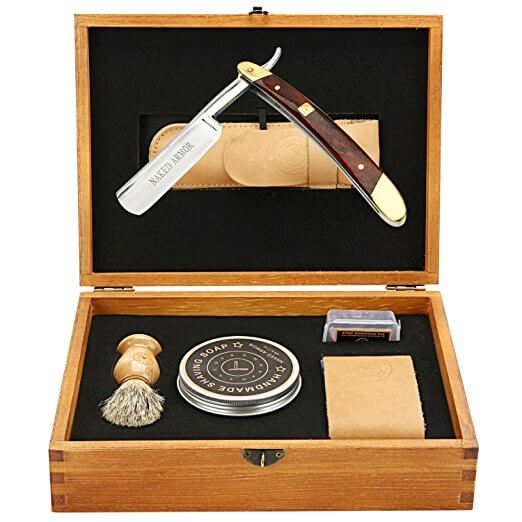Our "Beginner's Guide to Straight Razor Shaving: Top Techniques and Tools" Statements

Exploring the Record and Evolution of Straight Razor blades
Straight shavers, additionally recognized as cut-throat razor blades or available razors, have a lengthy and exciting background that courts back centuries. These classic bridegroom tools have seen substantial improvements in concept and attraction over time. In this write-up, we will certainly delve into the origins of straight razors, their advancement, and their surviving charm.
The history of straight shavers can easily be mapped back to historical opportunities. Early societies such as the Egyptians, Greeks, and Romans used sharpened coverings or flint to trim their face hair. Nonetheless, it was during the Middle Ages that the precursor to the modern straight razor blade emerged - the folding shaver.
The folding razor included a cutter that could possibly be safely folded into its handle when not in usage. This technology created it simpler for individuals to hold their razor blades without concern of unintended cuts or harm. The folding razor became popular throughout Europe throughout this period.
Through the 17th century, barbershops became common all over Europe and upright razors ended up being an necessary resource for professional hairdressers. These early cutters were helped make coming from carbon steel and required frequent honing on a leather-made strop to maintain sharpness. The capability required for shaving with a upright razor blade led to hairdressers being strongly respected members of society.
Bossman Brand Straight Razor Shaving Kit saw developments in blade manufacturing procedures along with improved tempering procedures leading in even sharper cutters. Sheffield, England ended up being prominent for generating high-quality steel cutters that were transported worldwide. The Sheffield company title ended up being synonymous with exceptional workmanship in straight razors.
During the 19th century, technological advancements sped up the advancement of straight razors. In 1825, siblings Jean-Jacques Perret and Charles-Henri Perret developed unfilled work techniques that made it possible for for thinner cutters along with raised flexibility while keeping sharpness. This advancement reinvented razor blade manufacturing by creating them even more reliable and affordable.
With automation came mass creation strategies, making upright shavers even more obtainable to the basic public. The growth of protection razor blades in the early 20th century shown an option to upright razors. Safety and security razors featured exchangeable blades, dealing with the need for honing and stropping. This innovation led to a downtrend in the appeal of straight razors.
Nonetheless, despite the introduction of protection razor blades and later electricity razors, straight shavers proceeded to keep a special spot one of traditionalists and lovers. Upright razor shaving ended up being a symbolic representation of masculinity, style, and workmanship.
In current years, there has been a comeback of rate of interest in traditional bridegroom techniques, leading to a renewed recognition for upright razors. Lots of people have rediscovered the joys of utilizing these timeless resources and delight in the ritualistic encounter they provide.

Today, modern manufacturing procedures have further strengthened the quality and durability of upright razor cutters. High-quality stainless steel cutters use exceptional intensity while requiring minimal routine maintenance. Furthermore, a variety of handle components such as timber, bone tissue, or artificial products give customization options for purchasers.
In verdict, exploring the history and development of upright shavers shows their surviving charm throughout centuries. Coming from ancient human beings to contemporary times, these grooming tools have advanced in design and appeal while staying icons of heritage and workmanship. Whether for personal use or as part of a assortment, utilizing a straight shaver is not merely concerning shaving; it is an encounter that links us with our past times while taking advantage of classic sophistication.
Word count: 554 phrases
